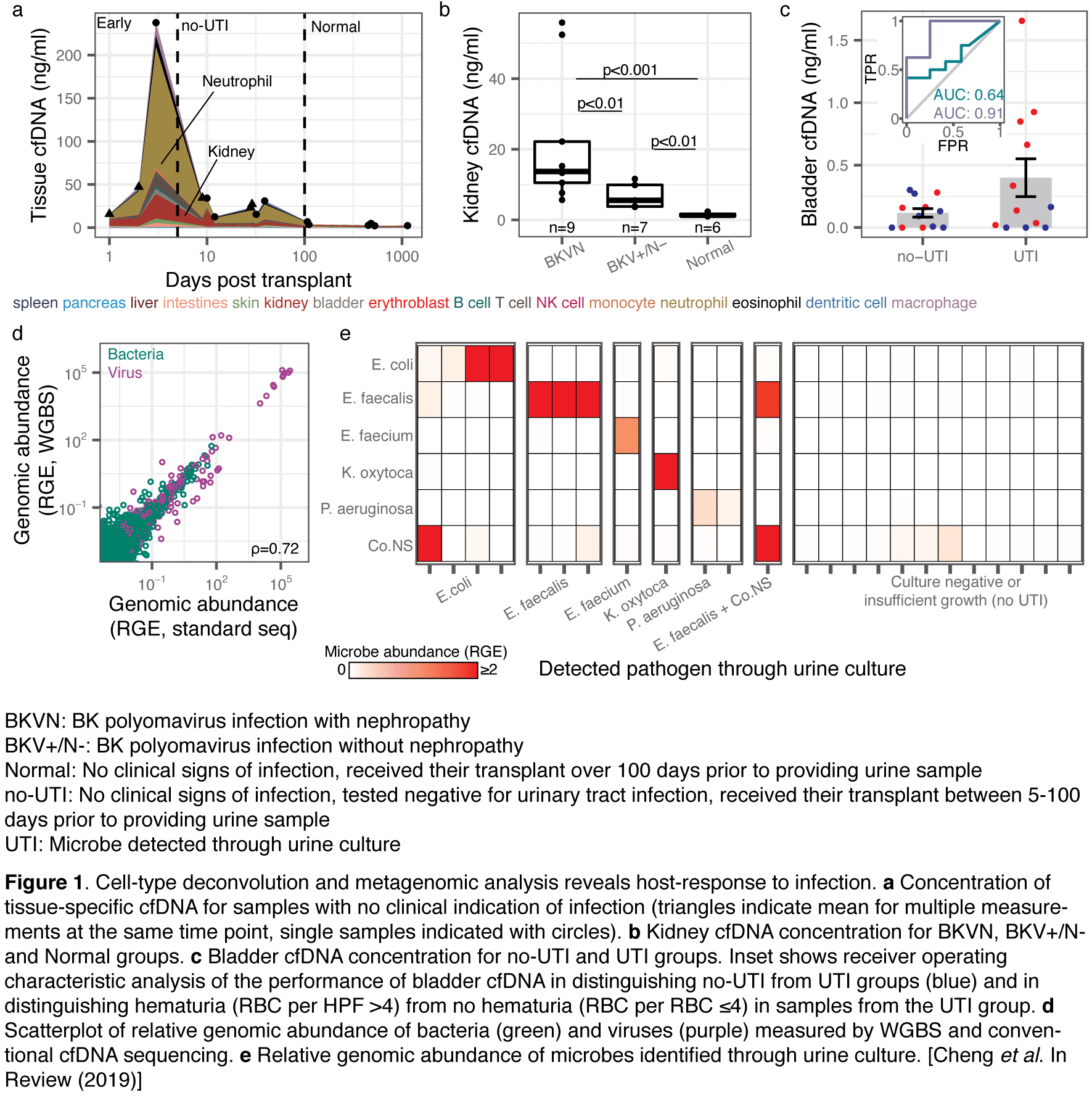
Monitoring microbial infection and quantifying the host immune response to infection via cell-free DNA
2Medicine, Weill Cornell Medicine, New York, New York, USA
3Transplantation Medicine, NewYork-Presbyterian Hospital-Weill Cornell Medical Center, New York, New York, USA
4Infectious Diseases, Brigham and Women's Hospital, Boston, Massachusetts, USA
5Medical Oncology, Dana-Farber Cancer Institute, Boston, Massachusetts, USA
High-throughput metagenomic sequencing offers an unbiased approach to identify pathogens in clinical samples. Conventional metagenomic sequencing however does not integrate information about the host, which is often critical to distinguish infection from infectious disease, and to assess the severity of disease. Here, we explore the utility of high-throughput sequencing of cell-free DNA after bisulfite conversion to map the tissue and cell types of origin of host-derived cell-free DNA, and to profile the bacterial and viral metagenome. We applied this assay to 51 urinary cfDNA isolates collected from a cohort of kidney transplant recipients with and without bacterial and viral infection of the urinary tract. We find that the cell and tissue types of origin of urinary cell-free DNA can be derived from its genome-wide profile of methylation marks, and strongly depend on infection status. We find evidence of kidney and bladder tissue damage due to viral and bacterial infection, respectively, and of the recruitment of neutrophils to the urinary tract during infection (Fig1a-c). Through direct comparison to conventional metagenomic sequencing as well as clinical tests of infection, we find this assay accurately captures the bacterial and viral composition of the sample (Fig1d,e). The assay presented here is straightforward to implement, offers a systems view into bacterial and viral infections of the urinary tract, and can find future use as a tool for the differential diagnosis of infections.

Powered by Eventact EMS